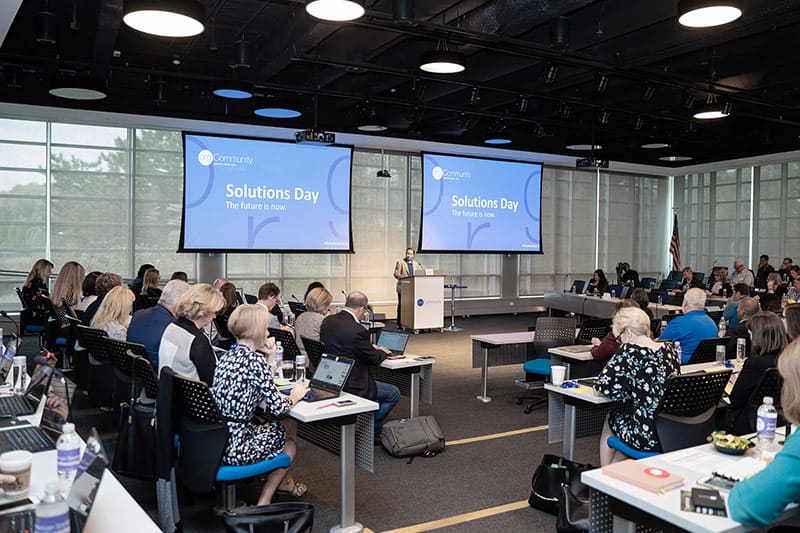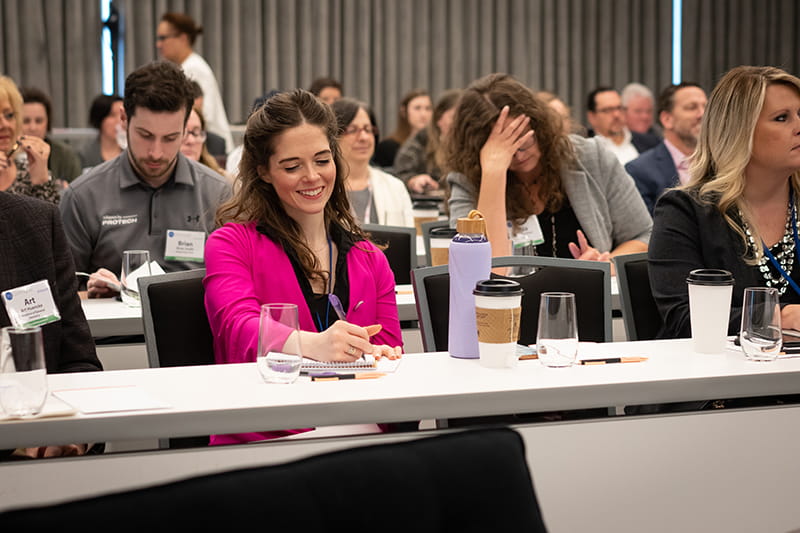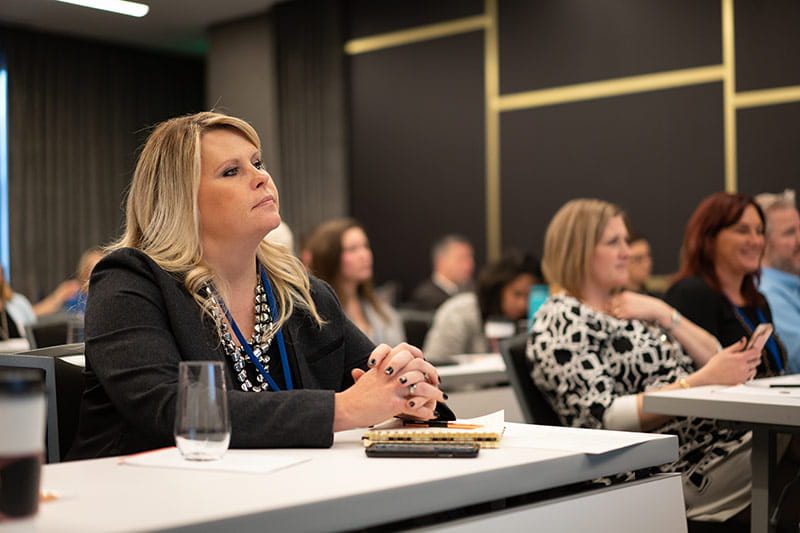Celebrating Associations is a series produced by .orgCommunity, celebrating the achievements of associations and the great impact on the industries they serve.
 Association and History: The Eastern Association for the Surgery of Trauma provides a forum for the exchange of knowledge to advance the care and rehabilitation of the injured patient. EAST places particular emphasis on interdisciplinary collaboration, scholarship, fellowship and developing leadership among young surgeons active in the care of the injured patient. It was founded in 1987 by a group of surgeons who wanted to provide an opportunity for young, aspiring trauma surgeons to exchange knowledge, discuss advancements in patient care and develop their careers within the discipline of surgery.
Association and History: The Eastern Association for the Surgery of Trauma provides a forum for the exchange of knowledge to advance the care and rehabilitation of the injured patient. EAST places particular emphasis on interdisciplinary collaboration, scholarship, fellowship and developing leadership among young surgeons active in the care of the injured patient. It was founded in 1987 by a group of surgeons who wanted to provide an opportunity for young, aspiring trauma surgeons to exchange knowledge, discuss advancements in patient care and develop their careers within the discipline of surgery.
About Its Members: EAST has more than 2,000 members. Qualification for active membership requires an applicant to be a licensed physician, active in the field of trauma residing in the United States or Canada and in possession of a valid certificate from a surgical board which is a member of the American Board of Medical Specialties or the Royal College of Physicians and Surgeons of Canada. Other types of membership are also available.
We’re celebrating EAST because … A very simple change, adding a tagline to its established logo, help provide guidance to EAST’s staff and volunteer leadership on where they should focus their time and efforts.
And also because … By restructuring its governance structure, EAST has empowered a large share of its membership to get more involved in (and enthused about) the organization. Meanwhile, EAST has identified new ways to connect with its younger membership and to stand apart from similar organizations.
We’ll learn more in an interview with Christine Eme, EAST’s executive director.
Q. What do you think EAST has done particularly well in the last couple of years?
A. Because our name doesn’t really explain who we are, and it doesn’t really tell people who we are and what we do, I encouraged the EAST board to look at doing a quick tagline, not a redo of the logo, but to add something that succinctly captured who we are and what we do. So a year ago, we approved the addition of our tagline: Advancing Science, Fostering Relationships, and Building Careers. And that complements EAST’s five strategic goals, which I think do a nice job of explaining what EAST is and why EAST exists. But those (goals) aren’t as visible or prominent in our communications branding, so I wanted something short and sweet to be able to explain it. The tagline has really helped the volunteer leaders and myself focus on what we’re doing and what we’re all about. It really does a nice job of summarizing what the organization is about, which is the development of the younger trauma surgeon.
When we’re looking at new initiatives, or reviewing old initiatives, I always have the leadership try to tie it back to a strategic goal, the mission of the organization and now this tagline. And if we really can’t, then should we be doing it? I think the organization, the board and the other volunteer leaders have really embraced this tagline, because we’re certainly about science but also about that career development and relationship development, which is a little bit unique for a medical association.

Q. How do you accomplish that relationship development?
A. We also underwent a restructuring of our organizational structure and our governance structure, where we identified strategic divisions and sections (i.e. committees), that fall under the divisions. We’ve really empowered a larger representation of our membership; individuals who are serving on the sections are more empowered to identify and develop new initiatives, implement current and existing initiatives, improve current initiatives and really be engaged. This new structure was approved in January 2015 but we’d been working toward the concept of the structure for two years. I’ve really seen an increased engagement and involvement and participation by individuals who are the volunteer leaders of EAST. Whereas in the past it was driven by the chair of a particular committee, there is more involvement from all of those serving on the sections of the organization. That’s really been satisfying for me to witness. There also seems to be an enthusiasm from the volunteer leaders that had previously been lacking.
Q. What’s a particular challenge that EAST faces?
A. It’s a challenge that probably existed several years ago and it’s not as challenging as it once was. That is being seen as a “player” in the trauma association community. Our related organization, the American Association for the Surgery of Trauma (AAST), is totally independent but related. EAST and AAST have a nice collaboration between the two organizations and mutual respect between the two organizations. We all have things to offer, and we’re not trying to duplicate what each other is doing. We’re complementing what the other organization is doing and that has been a goal for both organizations. Achieving this goal is somewhat due to the staff of the two organizations – we’ve worked to improve the relationship between the two organizations. There still continues to be a healthy competition between the groups, but we’re also working to identify unique and different things that we’re doing, and those are things that may complement what AAST and other trauma-related organizations are doing.

Q. If you could wave a magic wand and accomplish or obtain anything for EAST, what would it be?
A. That’s a hard one to answer, but I think it would come down to increasing the staff to be better positioned to implement new initiatives and continue to improve on the good things we’re already doing. I think during my tenure I’ve helped the organization be focused and really hone in on what they want to be doing and what we can be doing and doing that very well. I think that’s part of my responsibility – we can’t be all things to all people, so let’s do several things really well instead of many things not so well.
Q. Your Annual Scientific Assembly is unique. Tell us about that.

A. It’s not your typical Annual Scientific Assembly. We really embrace the balance of science with the importance of networking and relationship building. I introduced a networking event at the meeting a couple years back … and it’s one of the more popular components of our meeting. It’s an opportunity to get face time with trauma leaders.
We really encourage people to have conversations. We have a dodgeball tournament; a bunch of trauma surgeons playing dodgeball – that’s part of not taking themselves too seriously! This organization is committed to providing opportunities for the younger practitioner to engage and talk with the leaders in trauma and acute care surgery. The individuals who are considered those leaders are particularly supportive and committed to that as well.
We also introduced about five years ago the idea of doing community outreach, before the official start of the Annual Scientific Assembly. This will be our fifth year offering an event at a local area high school speaking to students about the dangers of distracted and impaired driving. After the 2016 program EAST will have reached nearly 2,000 high school aged children. I’m proud of this program and the impact it has had each year on the local community where EAST hosts its Annual Scientific Assembly.
Q. What do you think the biggest challenge facing associations over the next 10 years will be?
A. Relevance. It’s a buzz word, but it’s important (when) there’s an association for everything. For instance, the trauma community is not a huge community, but there are three major associations related to trauma. How do you maintain your membership, and also make it a membership that they find worthwhile, not just write a check? Also, there’s so much available online and through other channels that doesn’t cost them anything. So how do we deliver these things in a unique way that perpetuates that community? The relevance issue is going to be the challenge.
The other challenge is keeping the volunteer leaders that you have involved and giving them meaningful things to do. There are people who will volunteer just to add it to their resume, we all get that. But if you’re not doing a good job of identifying the prime initiatives you want done, or the goals for the volunteer leaders, and then empowering them to be creative and do something with it, that is something at risk as well.
Q. What do you enjoy most working for EAST?
A. It’s a small staff, but I enjoy that. I have a great leadership and board that really allows me to do my job, to be the association professional and they appreciate and want to hear what I have to offer. I feel I’m able to talk candidly and openly with them about things. I really enjoy that, and I think they respect my position and knowledge as much as I respect their position and their passion for the organization. I thank them every year on the anniversary of my employment for the opportunity to work with them.
Share YOUR Story: What great things is your association doing for its industry or for its operations? Contact heather@orgcommunity.com for details about submitting a story or to be interviewed.
Not yet a member of .orgCommunity? Invest in yourself and your organization by joining the .orgCommunity, which nurtures innovation in leaders through peer-to-peer interactions and programming.


